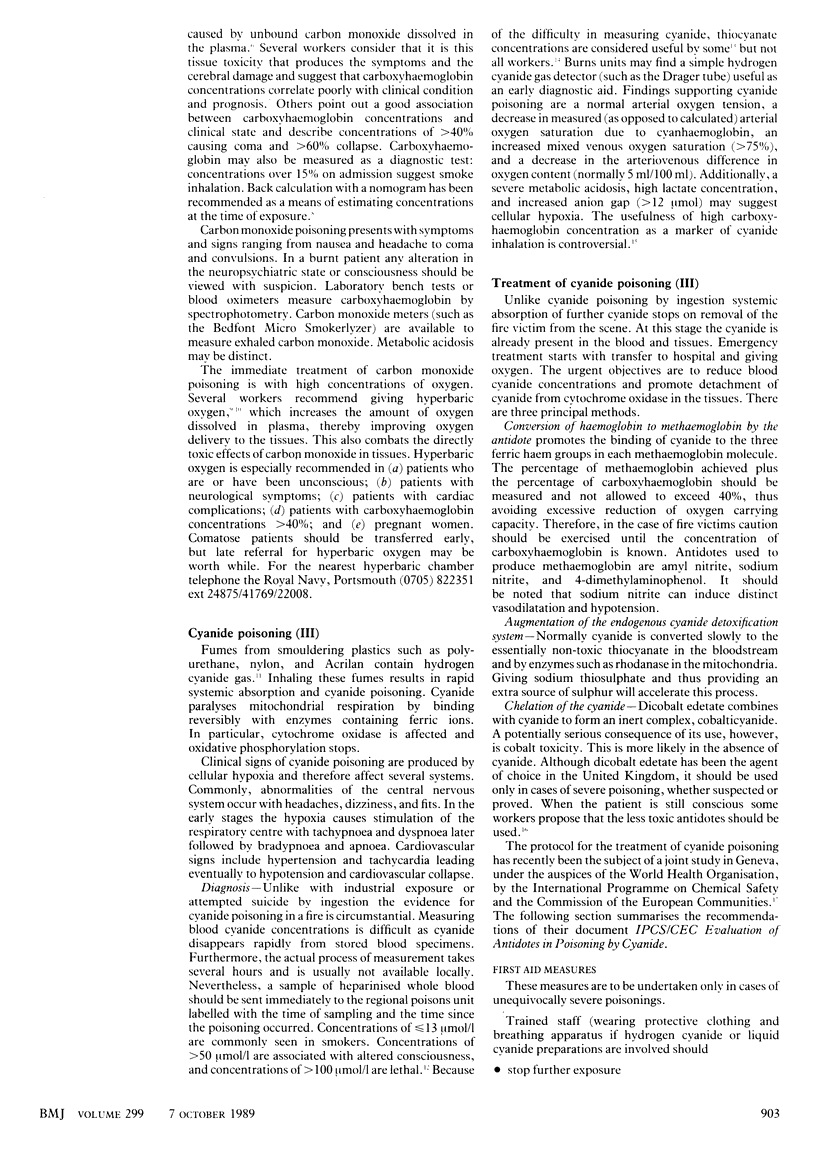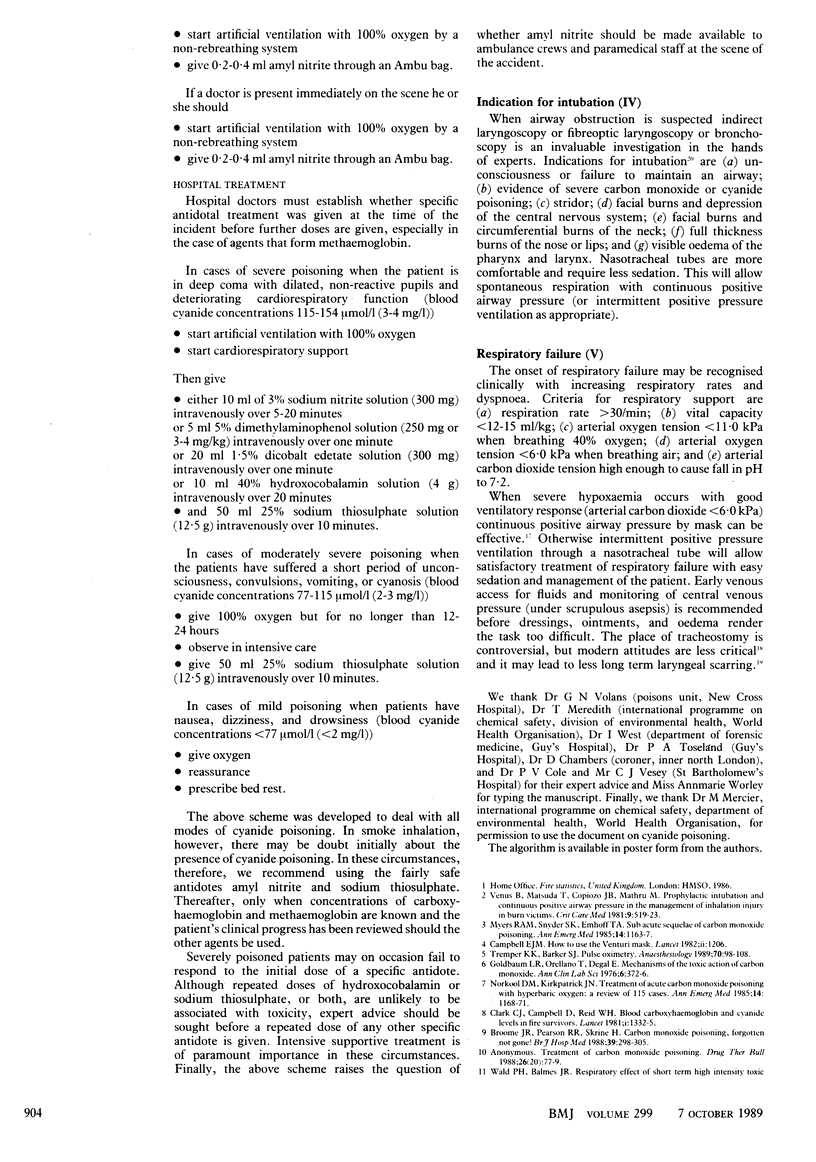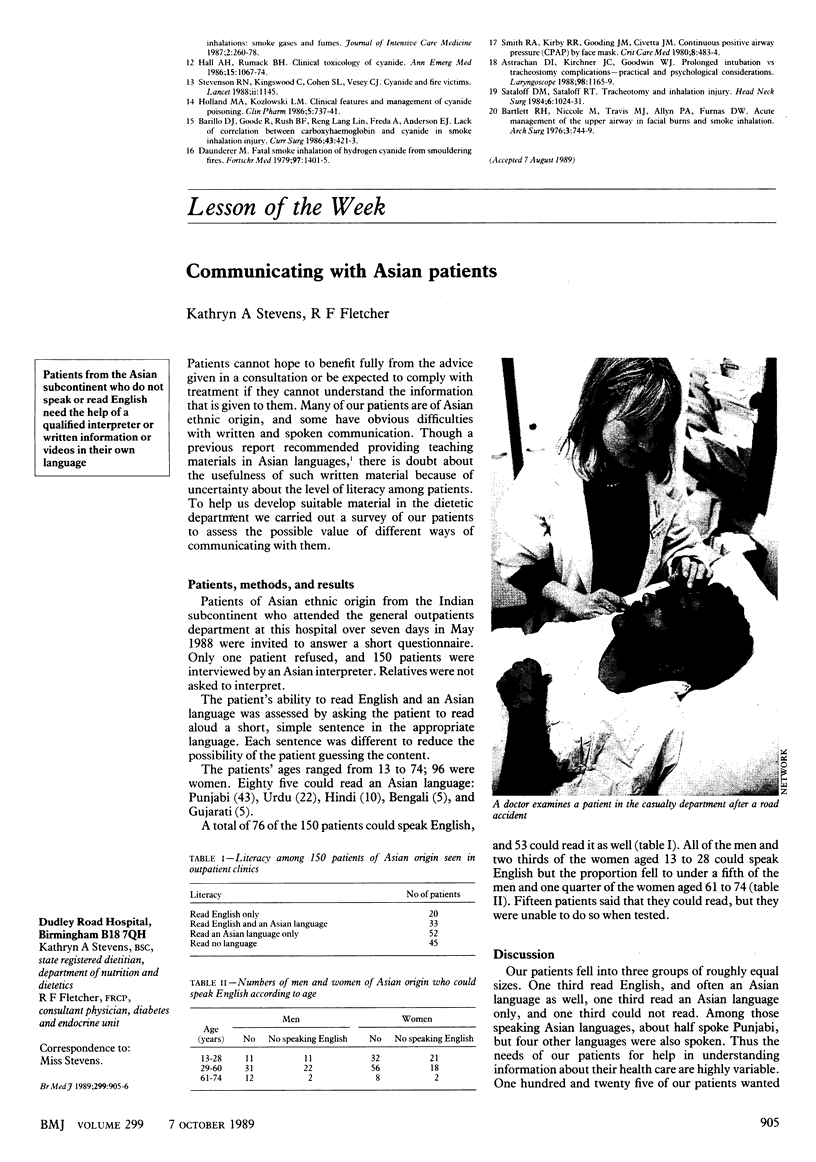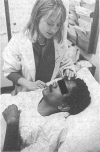Full text
PDF



Images in this article
Selected References
These references are in PubMed. This may not be the complete list of references from this article.
- Astrachan D. I., Kirchner J. C., Goodwin W. J., Jr Prolonged intubation vs. tracheotomy: complications, practical and psychological considerations. Laryngoscope. 1988 Nov;98(11):1165–1169. doi: 10.1288/00005537-198811000-00003. [DOI] [PubMed] [Google Scholar]
- Barillo D. J., Goode R., Rush B. F., Jr, Lin R. L., Freda A., Anderson E. J., Jr Lack of correlation between carboxyhemoglobin and cyanide in smoke inhalation injury. Curr Surg. 1986 Sep-Oct;43(5):421–423. [PubMed] [Google Scholar]
- Barlett R. H., Niccole M., Tavis M. J., Allyn P. A., Furnas D. W. Acute management of the upper airway in facial burns and smoke inhalation. Arch Surg. 1976 Jul;111(7):744–749. doi: 10.1001/archsurg.1976.01360250020003. [DOI] [PubMed] [Google Scholar]
- Broome J. R., Skrine H., Pearson R. R. Carbon monoxide poisoning: forgotten not gone! Br J Hosp Med. 1988 Apr;39(4):298-300, 302, 304-5. [PubMed] [Google Scholar]
- Campbell E. J. How to use the Venturi mask. Lancet. 1982 Nov 27;2(8309):1206–1206. doi: 10.1016/s0140-6736(82)91214-4. [DOI] [PubMed] [Google Scholar]
- Clark C. J., Campbell D., Reid W. H. Blood carboxyhaemoglobin and cyanide levels in fire survivors. Lancet. 1981 Jun 20;1(8234):1332–1335. doi: 10.1016/s0140-6736(81)92516-2. [DOI] [PubMed] [Google Scholar]
- Daunderer M. Tödliche Rauchvergiftung mit Blausäure durch Schwelbrände. Fortschr Med. 1979 Sep 6;97(33):1401–1405. [PubMed] [Google Scholar]
- Goldbaum L. R., Orellano T., Dergal E. Mechanism of the toxic action of carbon monoxide. Ann Clin Lab Sci. 1976 Jul-Aug;6(4):372–376. [PubMed] [Google Scholar]
- Hall A. H., Rumack B. H. Clinical toxicology of cyanide. Ann Emerg Med. 1986 Sep;15(9):1067–1074. doi: 10.1016/s0196-0644(86)80131-7. [DOI] [PubMed] [Google Scholar]
- Holland M. A., Kozlowski L. M. Clinical features and management of cyanide poisoning. Clin Pharm. 1986 Sep;5(9):737–741. [PubMed] [Google Scholar]
- Myers R. A., Snyder S. K., Emhoff T. A. Subacute sequelae of carbon monoxide poisoning. Ann Emerg Med. 1985 Dec;14(12):1163–1167. doi: 10.1016/s0196-0644(85)81022-2. [DOI] [PubMed] [Google Scholar]
- Norkool D. M., Kirkpatrick J. N. Treatment of acute carbon monoxide poisoning with hyperbaric oxygen: a review of 115 cases. Ann Emerg Med. 1985 Dec;14(12):1168–1171. doi: 10.1016/s0196-0644(85)81023-4. [DOI] [PubMed] [Google Scholar]
- Sataloff D. M., Sataloff R. T. CME program. Tracheotomy and inhalation injury. Head Neck Surg. 1984 Jul-Aug;6(6):1024–1031. doi: 10.1002/hed.2890060608. [DOI] [PubMed] [Google Scholar]
- Smith R. A., Kirby R. R., Gooding J. M., Civetta J. M. Continuous positive airway pressure (CPAP) by face mask. Crit Care Med. 1980 Sep;8(9):483–485. doi: 10.1097/00003246-198009000-00001. [DOI] [PubMed] [Google Scholar]
- Stevenson R. N., Kingswood C., Cohen S. L., Vesey C. J. Cyanide and fire victims. Lancet. 1988 Nov 12;2(8620):1145–1145. doi: 10.1016/s0140-6736(88)90568-5. [DOI] [PubMed] [Google Scholar]
- Tremper K. K., Barker S. J. Pulse oximetry. Anesthesiology. 1989 Jan;70(1):98–108. doi: 10.1097/00000542-198901000-00019. [DOI] [PubMed] [Google Scholar]
- Venus B., Matsuda T., Copiozo J. B., Mathru M. Prophylactic intubation and continuous positive airway pressure in the management of inhalation injury in burn victims. Crit Care Med. 1981 Jul;9(7):519–523. doi: 10.1097/00003246-198107000-00004. [DOI] [PubMed] [Google Scholar]



